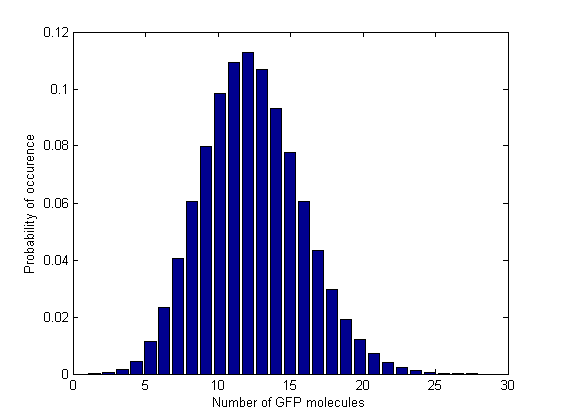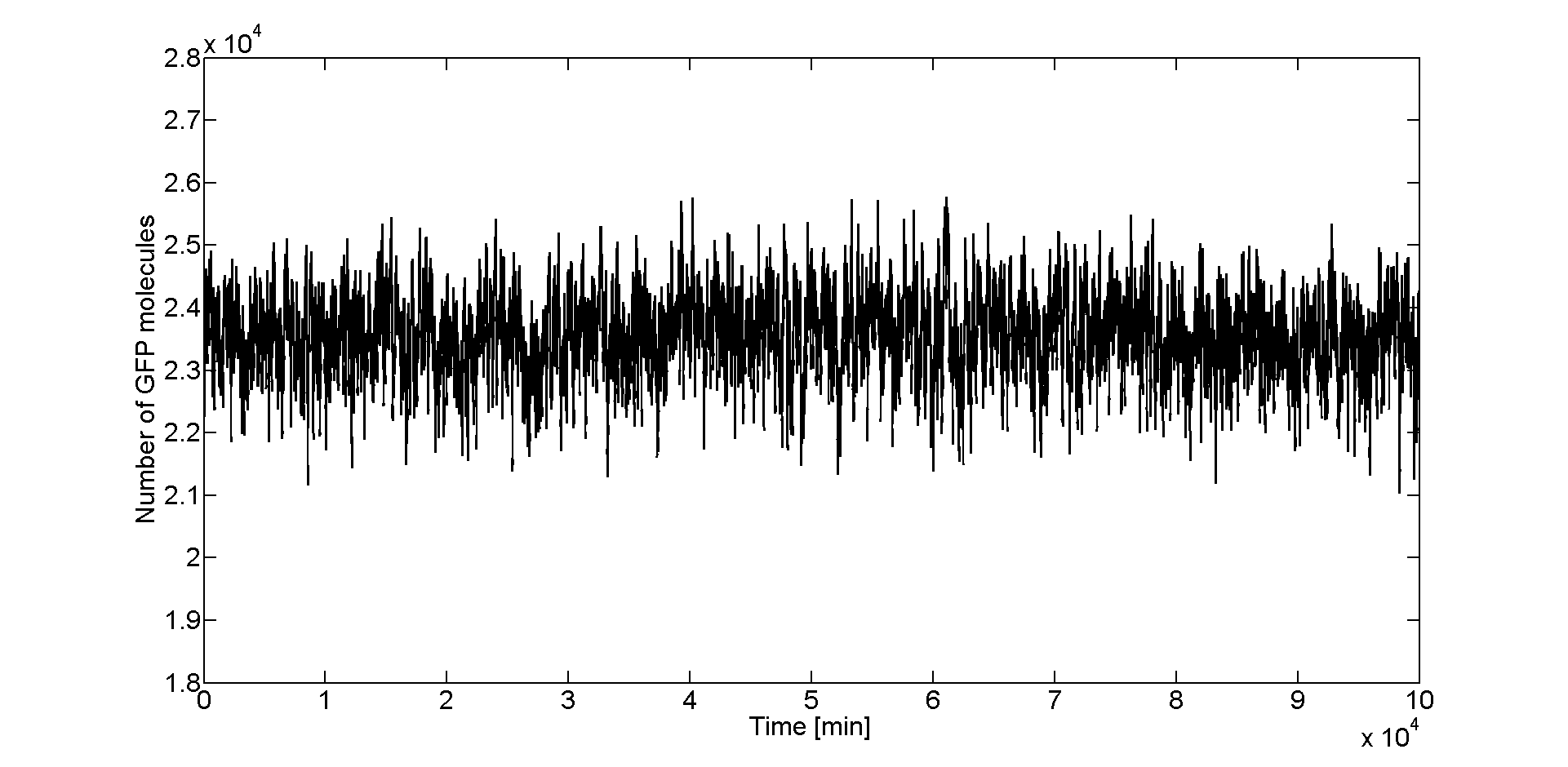Team:ETH Zurich/Modeling/Stochastic
From 2011.igem.org
Stochastic Analysis
Insert overview of page here
Method
Insert overview of page here
Simulation
|
| |
|
| |
|
We see in Figure 1 that we obtain a Gaussian distribution of GFP number of molecules at the steady state, with a mean of 23491 molecules and standard deviation of 667 molecules. If we convert this value to concentration we get 19.5046 μM, which is very close to what we obtained deterministically. We see that the system keeps fluctuating very closely to its steady state, with no large jumps away from it. The fact that the Gaussian distribution is unimodal tells us that our system is monostable. From this analysis we confirmed what we concluded before and that is the robustnes of our system, especially of the GFP band. We can now be sure that for a certain acetaldehyde concentration once the band appears, it won't start fading away. | |
Analysis of Results
Insert overview of page here
 "
"











